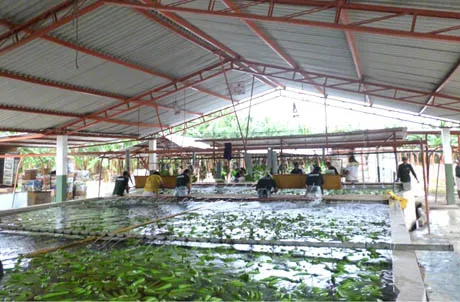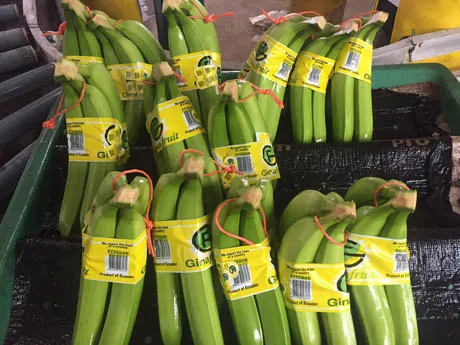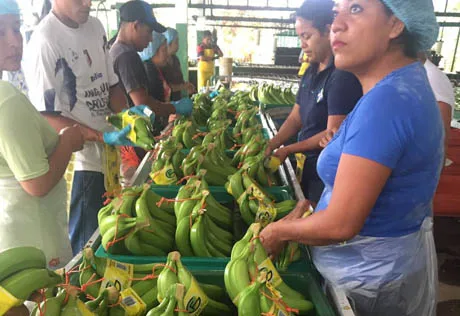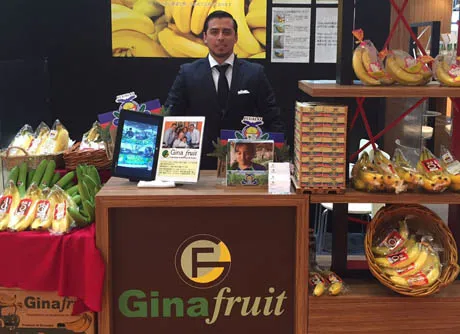The production, size, and length of bananas have been smaller than what producers expected to achieve because of the weather conditions. "We've had a lot of rain, few hours of light and not very high temperatures," said Hugo Castro, general manager of GinaFruit SA

Bananas need lots of sunlight, among other things, to gain weight, and achieve the caliber and length that translates into a greater production.
"The weather was very rainy and cloudy at the end of last year, and we did not have all the sunlight we needed, compared to the previous year."
As a result, the bananas have been picked at the different times and this, of course, has affected this crop's productivity. "The plant is stressed by the many climatic changes, so its maintenance requires much more attention and investment," the exporter said.
Meanwhile, other producing countries, such as Costa Rica, the Philippines and Colombia, had been expected to produce more fruit during their high season, which normally runs from week 1 to week 20. However, these countries have also suffered a significant lack of fruit, which, in the end, has resulted in a constant and very high demand for the Ecuadorian fruit, which also translates into very high prices, compared to the usual prices in the country.

"There were many weeks in which an 18.5 kg box of bananas, known as the 22XU, was being sold at twice its normal price. Our prices are good if we have a product available to sell, but, in general, the amount available to sell in the open market has been very small, because there was no production," Hugo said. The demand has been high and constant, so it's been impossible to fully meet it with the existing supply. As a result, prices have put exporters under pressure. "We have contracts with our customers and we have to comply with them, no matter what happens in the domestic market," he said. In addition, he added: "In order to comply with our contracts we've even had buy fruit at high market prices, as we were lacking it." Producers have benefited from this situation and, hopefully, they will invest all this extra money that they have received in their plantations. "According to our figures, by the end of 2017 and 2018, the quantity of product available in Ecuador will be much larger," the exporter said.

Due to climatic changes, the production curve has been delayed. From a commercial point of view, this is not the best time to get the production out. "Normally, high season prices are in line with the high season production; however, all of this year's high season production will go on sale when the prices are lower. We will have to see what happens, especially with Colombia, Costa Rica, and other competing producing countries to know what will really happen here in Ecuador," said Hugo.
There must always be a balance maintained between producers, exporters, and importers. "The good thing about Ecuador is that it is a competitive country. In addition, we have opened new markets where we were not present or where we didn't have the same strength we do now, such as Iran, Iraq, UAE, Saudi Arabia, Jordan, Oman, and countries close to Russia, like Kazakhstan or Tajikistan, which normally bought their products from the Philippines or India." These countries import large volumes, as Russia usually does, so if for some reason the market sinks they can always send their merchandise there. "These markets are good as plan B, but they are accustomed to buying at low prices," he said.

It's time to invest
"We have grown in volume, we have also managed to enter other markets, establish relationships with new supermarkets and, in addition, we are increasing our production," said Hugo Castro. Three weeks ago they bought a new plantation and their plan is to increase their current production by 15%. "Our goal for the end of the year is to continue acquiring productive areas to increase our production capacity by at least 40%," concluded the exporter.
For more information:
Hugo Alfredo Castro
GinaFruit S.A.
T: +593 999423369
E: gerencia@ginafruit.com.ec
www.ginafruit.com.ec




